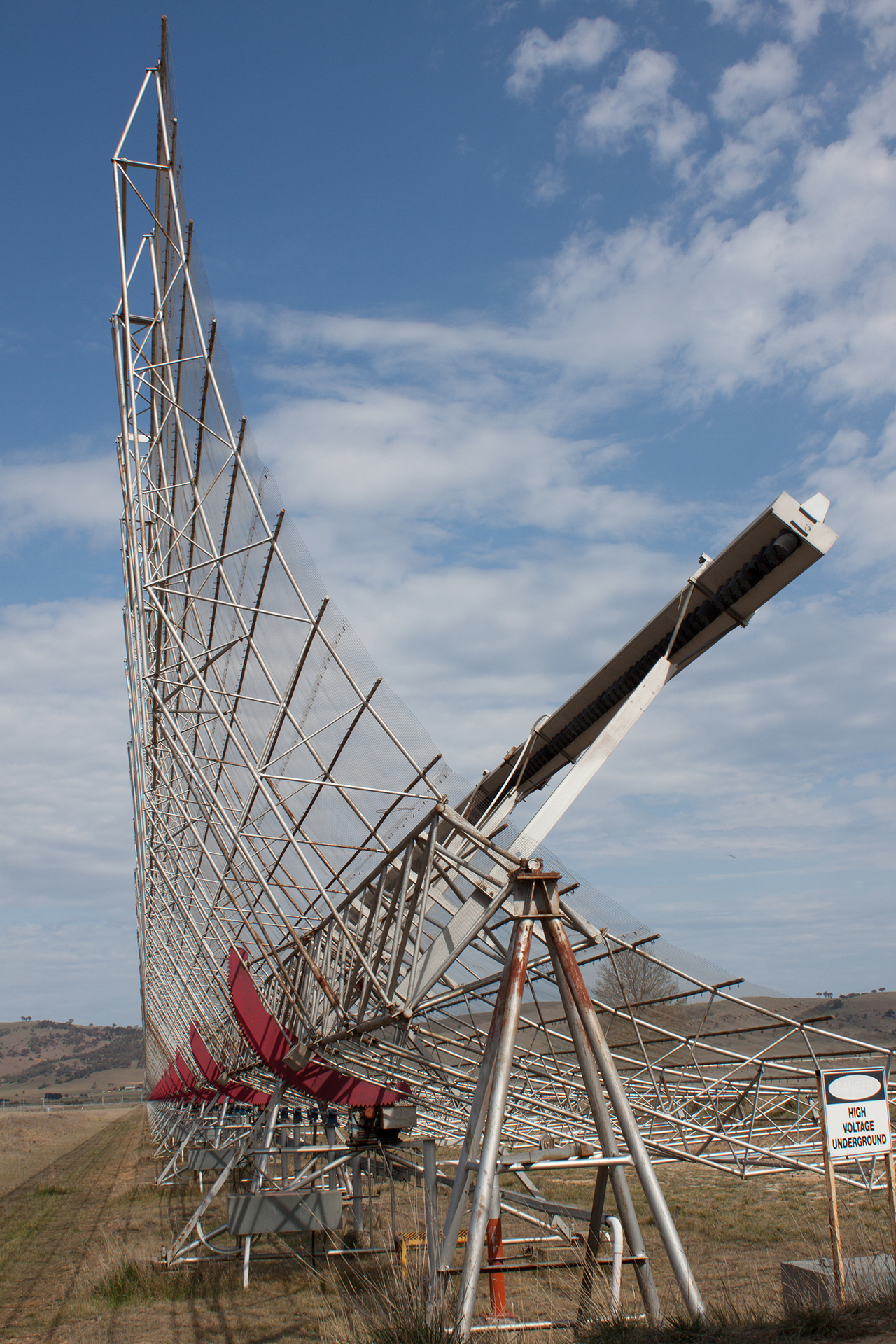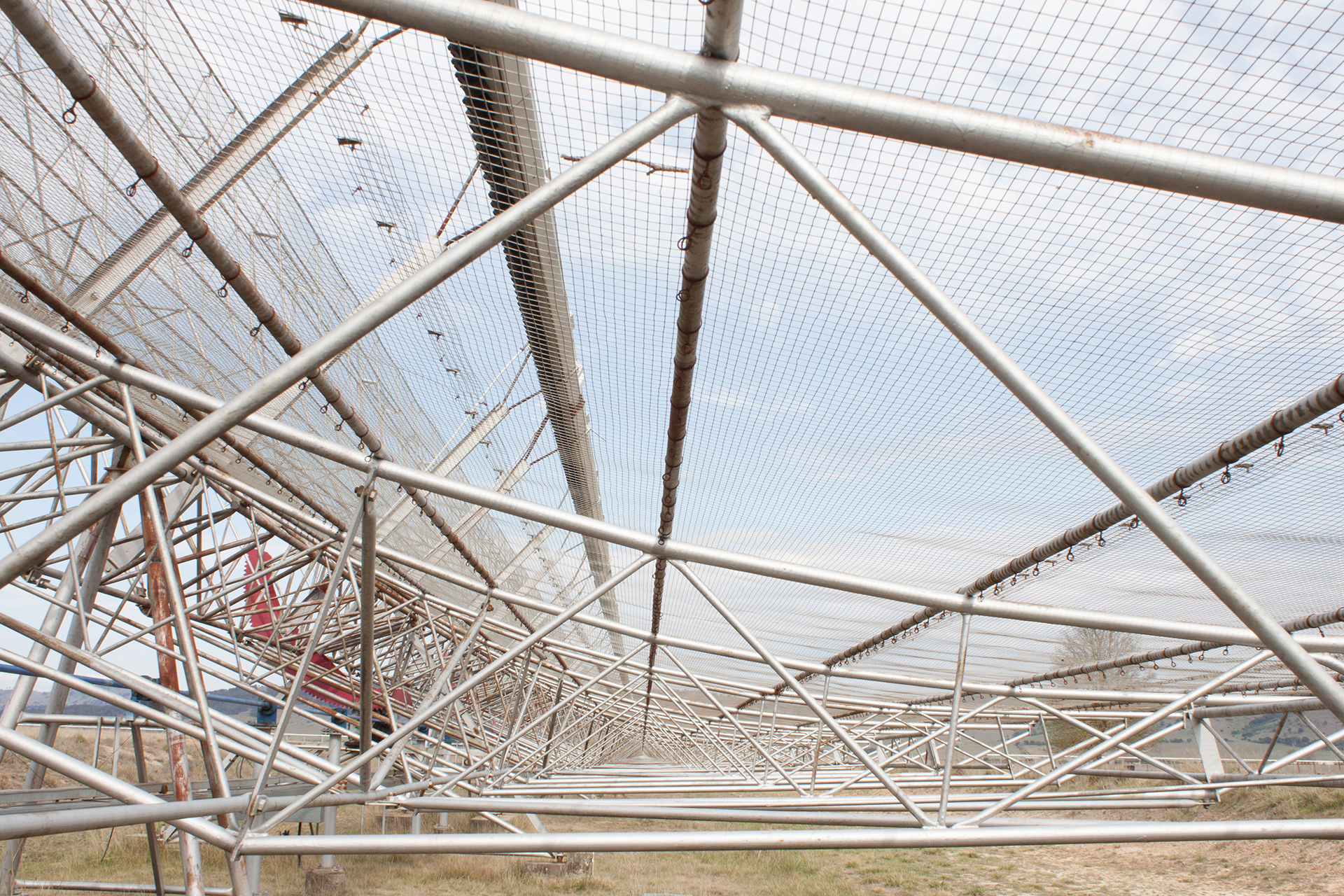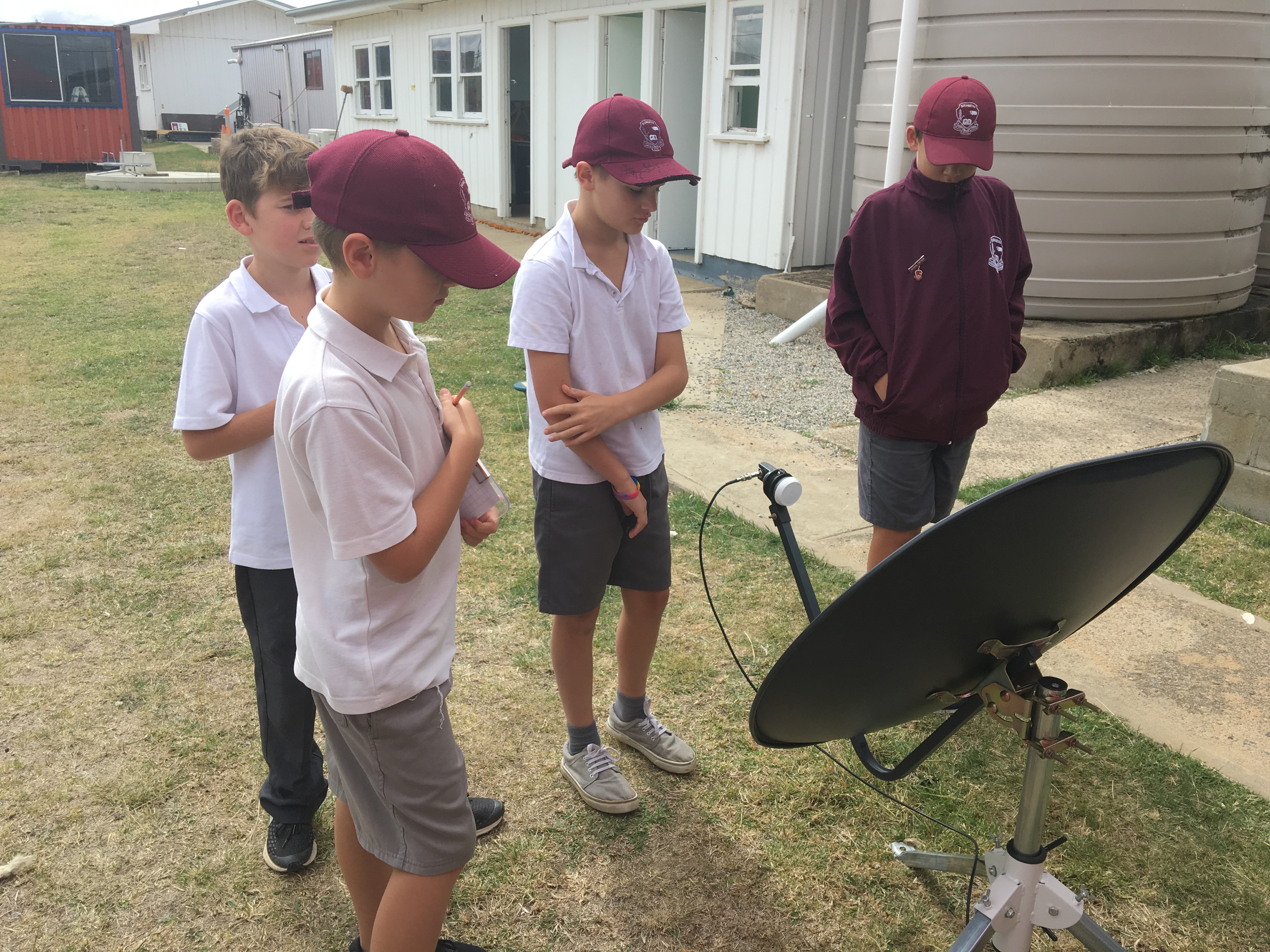Students in Focus
Reaching for the stars
When education students Michael Playford and Christina Starr signed up to assist with the Heritage Near Me Molonglo Radio Telescope: a heritage and education partnership project, little did they know that their perspectives of teaching and learning would change.
One of the first things you notice when you visit the Molonglo Radio Telescope (MRT) is its magnitude.
“It is massive!” said Michael. “This 11-metre-wide, mile-long metal cross appears alongside a little dirt road where wildlife roams freely, not far from the hustle and bustle of Canberra. “This huge piece of equipment that has been in use for 50 years, and continues to function today, gave me a glimpse into the depth of the history of science in Australia.”
“This huge piece of equipment that has been in use for 50 years, and continues to function today, gave me a glimpse into the depth of the history of science in Australia.”
Interrogating the potential benefits of educational excursions to the site, the development of classroom resources and the inclusion of astronomy in the school curriculum as part of the development of the project’s education and outreach business plan ended up having a far deeper meaning for these two passionate pre-service teachers.
After spending time talking to teachers from schools in the ACT and NSW; unpacking various aspects of the school curriculum across the learning phases (Kindergarten to Year 12); and conducting research into the history of the MRT and its prominence in Australia’s history in astronomy and science, Michael and Christina were ready to test their theories.
With limited time available, Michael and Christina coordinated three school excursions – two secondary schools and one primary school.
The insight and learning were immense.
As a recently qualified secondary school teacher Michael found the excursions insightful and the primary school group made the most profound impact.
“The amount of questions they asked was amazing. They were the most engaged and inspired when visiting the site.
“You could literally see their brains switch on while they tried to work out how the telescope functions. They showed a genuine interest; their questions were on point and they participated fully in the activities. It was so affirming from an educational perspective,” he said.
Christina relates a story of a Year 6 student who was so intrigued by the telescope, and fascinated with how it works, “he was hooked and will never forget what he learned”.
It soon became apparent to Christina and Michael that the MRT has far-reaching potential to positively contribute to education.
The opportunities to explore learning associated with the site more holistically, by incorporating all the key learning areas into an educational program or curriculum, are vast.
For example, the opportunity to relate authentic Australian stories about the site and to tell the story in a way that is engaging to an audience through written works, anecdotal narrative or video could complement the English learning area.
“An authentic task that has use and meaning contributes to lifelong learning, as opposed to a singularly motivated task that is purely submitted for a grade. In this way, teachers and students would be able to fully engage with the site creating deeper meaning and value beyond the assessment,” said Michael.
Experiential learning helps children to engage with the subject and see the impact in or on their lives.
“It was remarkable to see that an excursion of this nature could spark an interest that may alter a child’s career aspirations and ultimately their school career,” said Christina.
“I didn’t begin to imagine that I could use my education degree in this way. While I need to experience the classroom and learn to engage in the formal teaching environment, I have witnessed first-hand the benefit of education beyond the classroom. There is so much more to teaching.”
Footnote: Experiencing science and how it has shaped Australia’s social and historical landscape was the motivation behind the Molonglo Radio Telescope (MRT) heritage and education partnership project. This project was assisted by the NSW Government through the Heritage Near Me program and directed by Dr Alison Wain, Assistant Professor and Lecturer in Heritage Conservation at the University of Canberra.
A collaboration between the University of Canberra, University of Sydney, and Swinburne University of Technology, the project aimed to complement scientific theory and remote data processing with a tangible experience.
Words by Andy Visser and photos supplied
